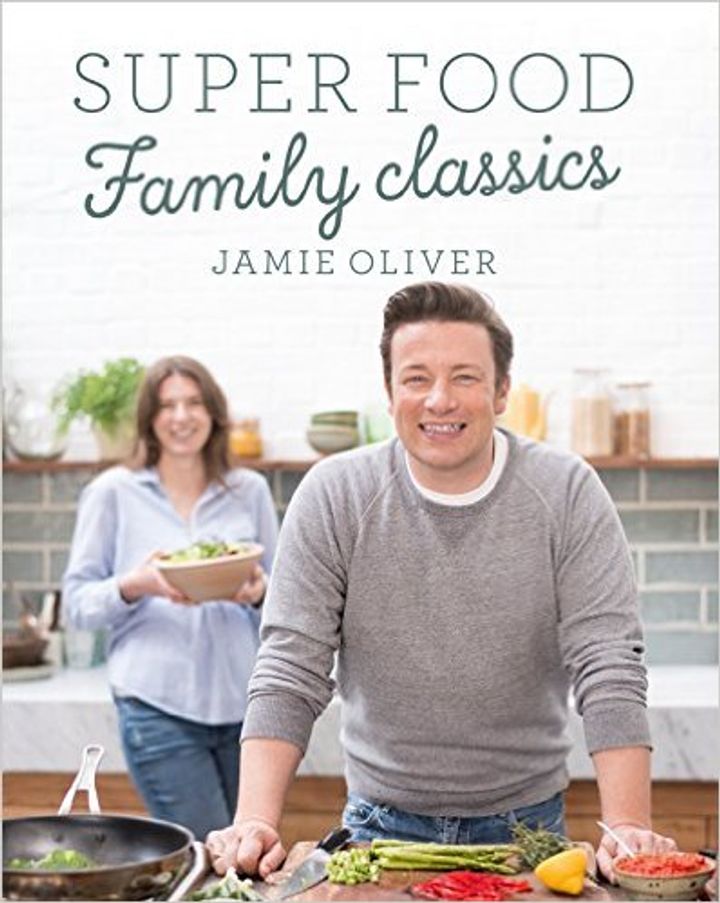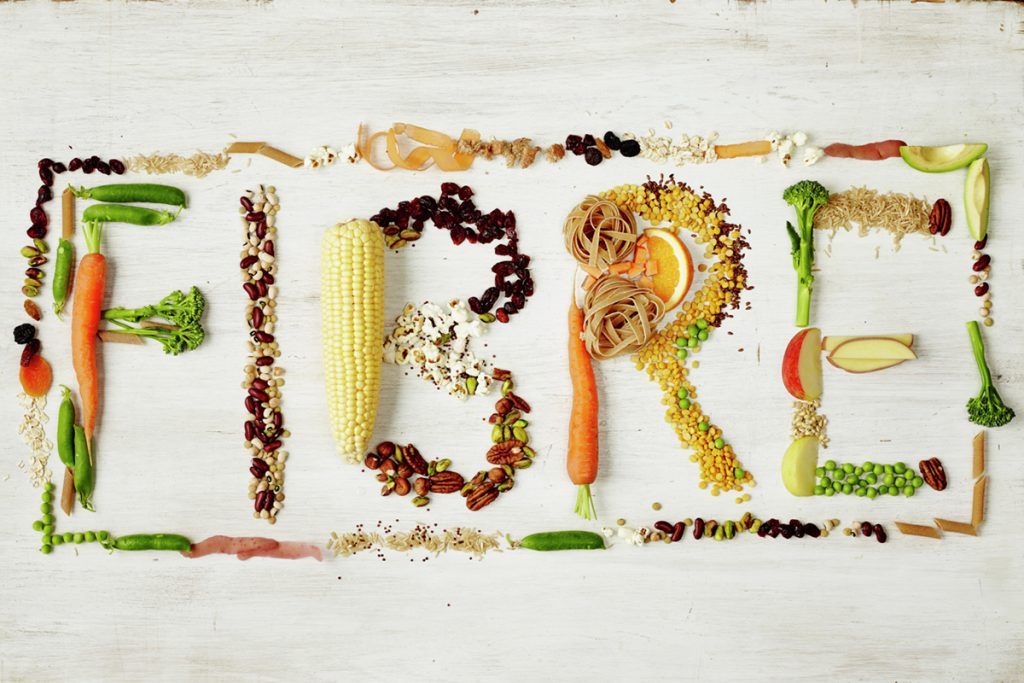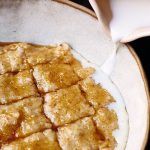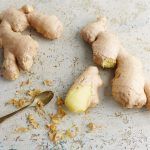What you’ll learn here is just how simple it is to up your fibre intake – I genuinely believe it is one of the easiest areas of our diets we can improve on.
Fibre is super-important in keeping our digestive systems happy. A fibre-rich diet helps our gut microbiota to flourish and helps to bulk up our faeces (that’s right, I’m talking about poo, but it’s important!), meaning we can get rid of waste efficiently. Both of these things equal a happy gut – double pleasure!
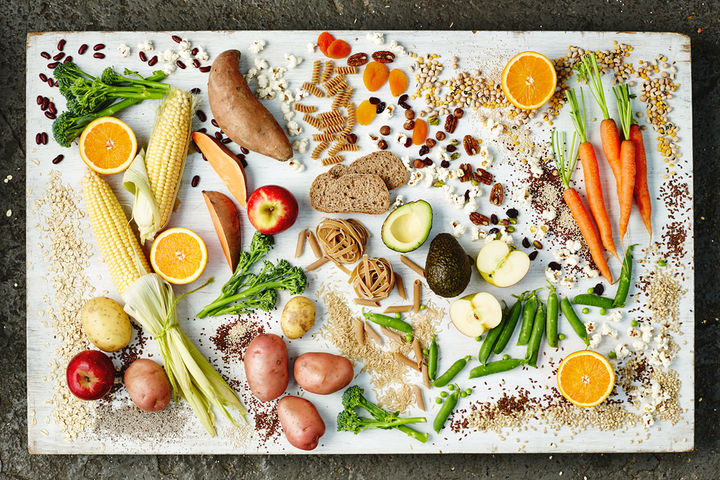
WHAT FIBRE IS
Fibre is classed as a carbohydrate, and is found in plant-based foods. We consume two different types, both of which are equally important and play a vital role:
Viscous or insoluble fibre – largely found in wholegrain and wholewheat foods, as well as popcorn, potato skins, dried fruit, nuts, beans, sweetcorn, broccoli and carrots. We can’t digest this, but our gut microbiota can, and its important function is to help other food and waste pass through the gut, keeping our insides happy. Upping insoluble fibre intake can help to relieve constipation.
Non-viscous or soluble fibre – found in foods such as amazing oats, barley, pulses, beans, sweet potatoes, peas, apples, oranges and avocados. We can’t digest this but our gut microbiota can, which keeps them happy – it slows our digestion and can help lower blood cholesterol.
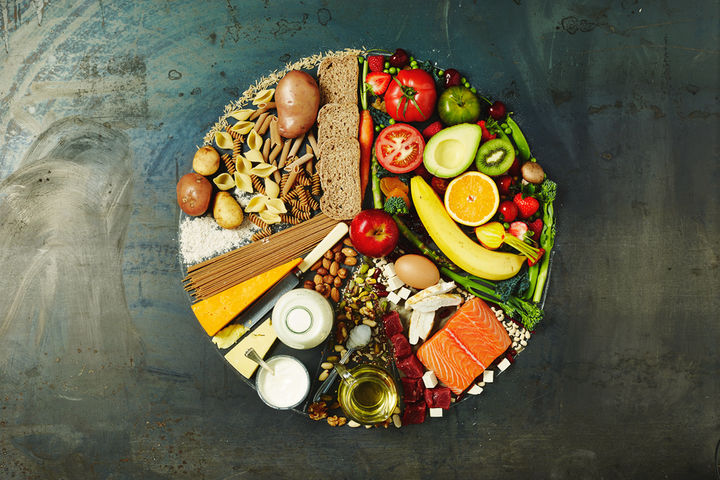
HOW MUCH FIBRE WE NEED
Following the balanced plate philosophy, starchy carbohydrates should make up about 40% of our meals.
As adults, we should be aiming for about 30g of fibre each day, but here in the UK on average we’re well under 20g a day.
To help make sense of how much fibre we need each day, here’s a chart to show what that means with everyday foods.
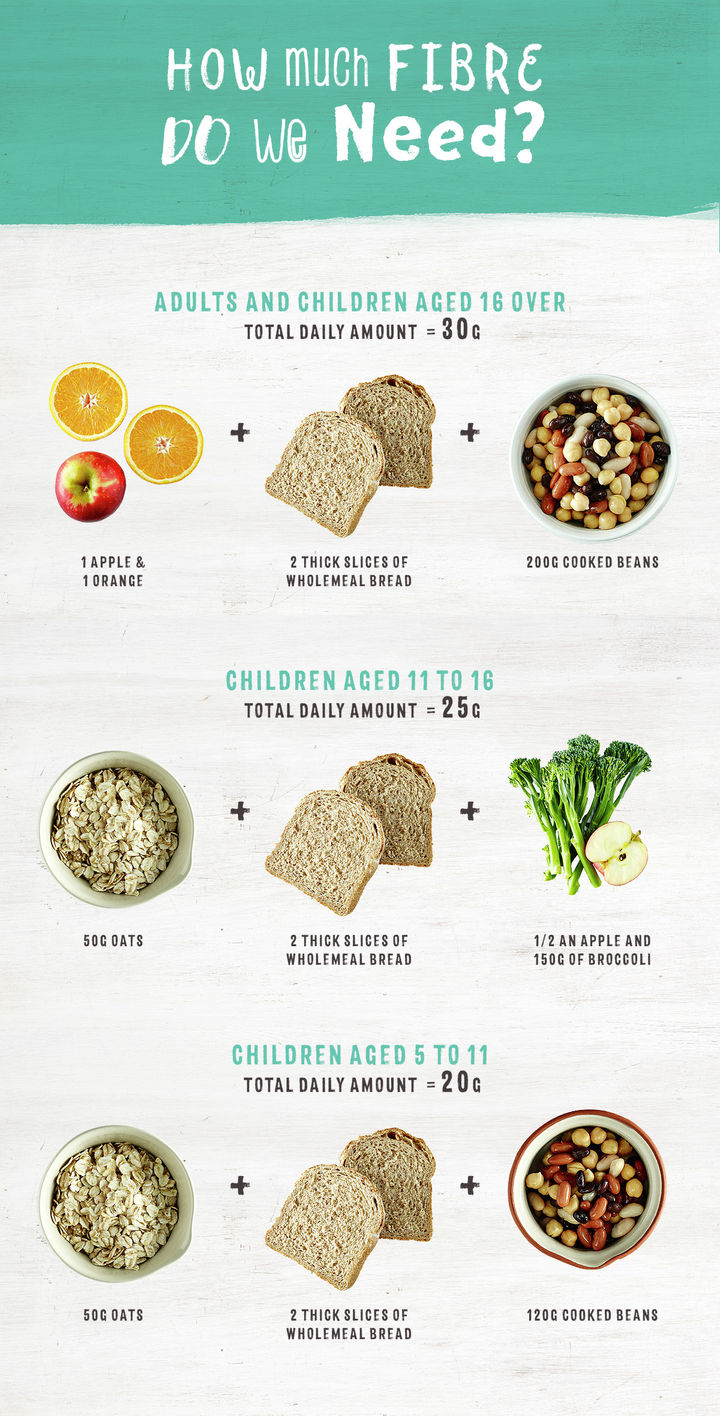
THE HEALTH BENEFITS
- If we don’t get enough fibre, our digestive system will slow down and we can become bloated and lethargic, affecting our ability to perform everyday tasks, so it’s really important to make sure we are getting enough.
- Fibre also helps us to feel fuller for longer, preventing over-eating and playing a role in weight control.
- Eating plenty of fibre-rich foods has been shown to help lower our risk of heart disease – by keeping our cholesterol levels in check – along with type-2 diabetes and some cancers.
- There is also strong evidence that eating oats or barley, which contain beta-glucans, lowers cholesterol.
So come on guys, it’s a win win, right?
SIMPLE TIPS TO UP YOUR FIBRE INTAKE
- Switching from refined carbs to wholegrain or wholewheat varieties can have a significant impact on your intake. For example, just switching from a slice of white bread to a slice of brown can quadruple the amount of fibre we get (from 0.5–1g to 3–4g).
- Swap white pasta for wholewheat, and choose high-fibre ingredients, such as oats, quinoa, beans, pulses, chia and flaxseeds.
- Add some fruit or dried fruit, nuts and seeds to your breakfast for natural sweetness and crunch.
- Bulk up salads and soups with beans and lentils, plus extra veg and fruit.
- f using potatoes, leave the skins on for an added boost of fibre and increased nutritional benefit.
- A small handful of dried fruit, nuts and seeds (up to 30g), a handful of popcorn, or some veg crudités are all great fibre-rich options to choose for a snack.
- When you’re shopping, remember when it comes to choosing fibre-rich carbohydrates you want to see the word ‘whole’ in front of starchy carbs in the ingredients list. Don’t get confused with ‘multigrains’ – this means there are different grains within the product, but doesn’t guarantee that they are wholegrains.
- And of course, eat lots of veggies and fruit, which should make up another 40% of your plate.
Check out more ideas for easy, inspirational meals to introduce more fibre into your diet and read about why we’re celebrating good carbohydrates.
Extract adapted from Super Food Family Classics by Jamie Oliver, published by Penguin Random House ⓒ Jamie Oliver Enterprises Limited (2016 Super Food Family Classics). Cover photography by Paul Stuart.
